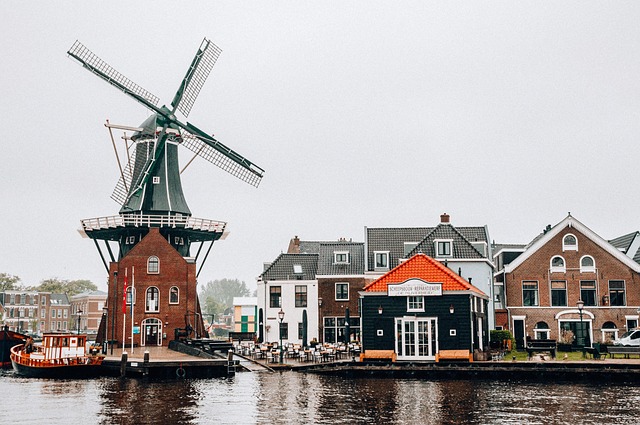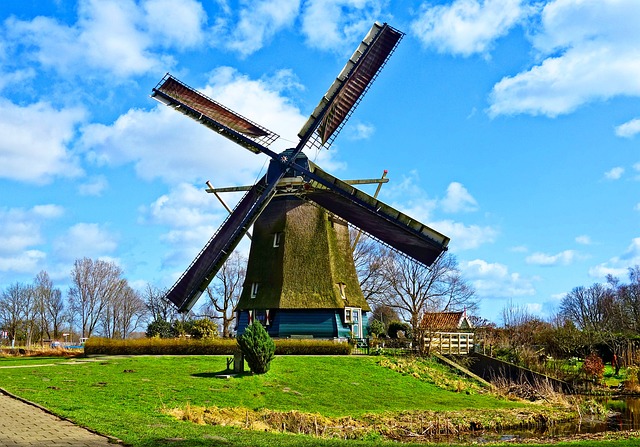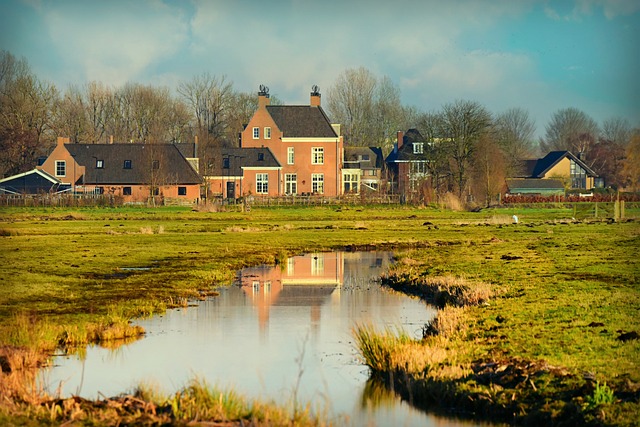Dutch Architecture: Modern and Traditional Styles

The Netherlands is a country where architecture tells the story of its rich history, innovative spirit, and cultural identity. From the iconic gabled houses of Amsterdam to the cutting-edge designs of Rotterdam, Dutch architecture seamlessly blends tradition and modernity. This article explores the evolution of Dutch architecture, highlighting its most distinctive styles, iconic landmarks, and the architects who have shaped its skyline.
Traditional Dutch Architecture
1. Dutch Renaissance (16th–17th Century)
The Dutch Renaissance period marked a shift from Gothic to classical influences, inspired by Italian architecture. Key features include:
- Step Gables: Triangular or stepped facades that crown the tops of buildings.
- Ornamental Details: Decorative elements like pilasters, scrolls, and sculpted figures.
- Red Brick: The use of red brick with white stone accents became a hallmark of Dutch buildings.
Iconic Examples:
- Canal Houses in Amsterdam: The narrow, tall houses along Amsterdam’s canals are quintessential examples of Dutch Renaissance architecture. Their gabled facades and ornate details reflect the wealth of the Dutch Golden Age.
- Hofje van Gratie (Alkmaar): This almshouse features a classic Dutch Renaissance design with a stepped gable and symmetrical layout.
2. Dutch Baroque (17th Century)
During the Dutch Golden Age, Baroque architecture flourished, characterized by grandeur and opulence. Key features include:
- Curved Gables: Replacing the stepped gables, curved gables became popular, adding a sense of movement to buildings.
- Symmetry and Proportion: Buildings were designed with balanced facades and harmonious proportions.
- Large Windows: To maximize natural light, Dutch Baroque buildings often feature large windows.
Iconic Examples:
- Royal Palace (Amsterdam): Originally built as the town hall, this building showcases the grandeur of Dutch Baroque with its symmetrical design and classical elements.
- Mauritshuis (The Hague): This 17th-century mansion, now a museum, exemplifies Dutch Baroque with its elegant proportions and decorative details.
3. Dutch Classicism (17th–18th Century)
Inspired by ancient Greek and Roman architecture, Dutch Classicism emphasized simplicity, symmetry, and order. Key features include:
- Columns and Pediments: Classical elements like columns and triangular pediments were incorporated into building designs.
- Strict Symmetry: Facades were meticulously balanced, reflecting a sense of harmony and order.
Iconic Examples:
- Paleis Huis ten Bosch (The Hague): This royal palace features a classical design with a central dome and symmetrical wings.
- Waag (Amsterdam): Originally a city gate, this building was redesigned in the classical style with a prominent pediment and decorative elements.
Modern Dutch Architecture
1. Amsterdam School (Early 20th Century)
The Amsterdam School was an architectural movement characterized by expressive, sculptural designs and the use of brick. Key features include:
- Organic Forms: Buildings often feature curved lines and flowing shapes.
- Decorative Brickwork: Intricate brick patterns and sculptural details are a hallmark of this style.
- Social Housing: The Amsterdam School played a significant role in designing affordable housing with artistic flair.
Iconic Examples:
- Het Schip (Amsterdam): Designed by Michel de Klerk, this housing complex is a masterpiece of the Amsterdam School, with its expressive brickwork and imaginative details.
- Scheepvaarthuis (Amsterdam): This former shipping house features elaborate brick facades and maritime-themed decorations.
2. De Stijl Movement (Early 20th Century)
The De Stijl movement, led by artists like Piet Mondrian and architects like Gerrit Rietveld, emphasized abstraction and simplicity. Key features include:
- Geometric Forms: Buildings and furniture designs feature clean lines and rectangular shapes.
- Primary Colors: The use of red, blue, and yellow, along with black and white, creates a bold visual impact.
Iconic Examples:
- Rietveld Schröder House (Utrecht): Designed by Gerrit Rietveld, this UNESCO World Heritage Site is a masterpiece of De Stijl architecture, with its open-plan layout and dynamic use of color.
- Café De Unie (Rotterdam): This building, designed by J.J.P. Oud, showcases the De Stijl aesthetic with its geometric facade and primary colors.
3. Modernism (Mid-20th Century)
Modernist architecture in the Netherlands focused on functionality, simplicity, and the use of new materials like concrete and glass. Key features include:
- Minimalist Design: Clean lines and unadorned facades characterize modernist buildings.
- Open Spaces: Emphasis on light and open floor plans.
Iconic Examples:
- Van Nelle Factory (Rotterdam): A UNESCO World Heritage Site, this former factory is a prime example of modernist industrial design, with its glass curtain walls and functional layout.
- Erasmus University (Rotterdam): Designed by Hugh Maaskant, this campus features modernist buildings with a focus on functionality and innovation.
4. Contemporary Architecture (21st Century)
Contemporary Dutch architecture is known for its bold, innovative designs and sustainable practices. Key features include:
- Experimental Forms: Architects push the boundaries of design with unconventional shapes and materials.
- Sustainability: Green building practices and energy-efficient designs are a priority.
Iconic Examples:
- Markthal (Rotterdam): This horseshoe-shaped market hall combines residential and commercial spaces, with a stunning ceiling mural by Arno Coenen.
- EYE Filmmuseum (Amsterdam): Designed by Delugan Meissl Associated Architects, this futuristic building on the IJ River is a cultural hub for film enthusiasts.
- The Whale (Rotterdam): This residential building, designed by De Architekten Cie, features a distinctive curved shape and sustainable design elements.
Dutch Architects Who Shaped the Skyline
- Hendrick de Keyser: A leading architect of the Dutch Renaissance, known for designing Amsterdam’s Westerkerk and Zuiderkerk.
- Michel de Klerk: A key figure in the Amsterdam School, famous for his expressive brick designs.
- Gerrit Rietveld: A pioneer of the De Stijl movement, renowned for the Rietveld Schröder House.
- Rem Koolhaas: A contemporary architect and founder of OMA, known for iconic projects like the CCTV Headquarters in Beijing and the Rotterdam Kunsthal.
- Ben van Berkel: Co-founder of UNStudio, known for innovative designs like the Erasmus Bridge in Rotterdam.




